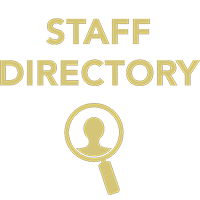
Welcome to the Transportation Department
Transportation at Fowlerville Community Schools is dedicated to ensuring the safe and efficient transportation of students to and from school. Our team of professional drivers and support staff is committed to maintaining high standards of safety and reliability. We take pride in providing timely and courteous service, fostering a positive experience for students and parents alike. Our mission is to support the educational process by providing dependable transportation that meets the needs of our community.
Bus Transportation Information
All 2024-25 Requests for Alternate Busing Forms expired on June 6, 2025. New requests for Alternate busing must be submitted annually.
Requests for Alternate Busing Forms for the 2025-26 school year must be submitted directly to Transportation no later than Friday, August 1, 2025. Fully completed forms are needed for each student, and stated guidelines must be met before approval. While we will accept alternate forms after this date, please be aware that requests are less likely to be accepted because bus routes and rosters have been established, and room is frequently not available. Approved requests received after August 1, 2025, will not be processed until five (5) days after the start of the school year.
Student/Parent Handbook
Introduction
The purpose of this handbook is to provide students and parents/guardians with general information about the Fowlerville Community Schools pupil transportation system. Public Act 187 of the Michigan Motor Vehicle Code outlines the pupil transportation laws that all school districts must follow. A copy of Public Act 187 is available for review during regular office hours in the Transportation Department. Selected Fowlerville Schools transportation policies, regulations, and safety rules are included in this handbook.
Fowlerville Community Schools operates a fleet of 22 school buses that we travel over, 325,000 miles a year. We also provide transportation services for academic field trips and athletic events each year.
Fowlerville Community Schools is proud of its fleet of buses. We employ two full time licensed technicians who provide preventative maintenance and general repairs. The Michigan State Police inspect the fleet on an annual basis. For many years we have received outstanding inspection results helping to assure your student's safety.
At Fowlerville Community Schools, we strive for excellence in transportation services to you, our customers.
Transportation of regular education students to and from school is not required by law. Please take time to read the following pages and review them with your children in order to protect your transportation privileges.
It is the mutual responsibility of the parent/guardian and school district personnel to make a reasonable effort to understand and cooperate with each other regarding safe and orderly pupil transportation.
School bus transportation is provided only for eligible students and shall be considered a PRIVILEGE to be enjoyed only as long as the students accept responsibility for their own personal conduct and carefully follow all rules and regulations.
Bus Routes and Bus Stops
Safety is the most important factor in transporting Fowlerville students. The following information. is offered to help make pupil transportation safe and successful.
1. Bus stops and bus routes are established on the basis of safety, efficiency, and in accordance with State laws and recommendations. The stopped bus must be visible for at least 400 feet in both directions. Bus stops must be at least 200 feet apart.
2. Bus stops will be placed at locations consistent with State laws and Board policy.
3. If a bus travels a section of road for one particular bus stop, a parent/guardian shall call the Transportation Department on days busing is not needed at that stop. If the student does not ride for (10) consecutive school days and there has not been communication to the Transportation Department, the student will be removed from the bus route and the bus will no longer stop. A parent/guardian will be required to reestablish busing by contacting the Transportation Department.
4. Changes to any student’s busing schedule needs to be first approved by the Transportation Department and then communicated to the appropriate school.
Please note: Due to circumstances that may or may not be under the control of the school district:
- The district reserves the right to change stops and routes when necessary.
- Bus routes may be adjusted if necessary because of unsafe or impassable roads.
Transportation Eligibility Requirements
Walk and Ride Policy
Students who live 1 1/2 miles or greater from the school that they attend shall be eligible to be transported to school.
Under normal conditions, elementary students shall be expected to walk up to one half mile and secondary students up to one mile to a bus stop.
Special Health Issues
Parents/guardians of students with unique health issues that could become safety issues on the bus are encouraged to share that information with the bus driver by calling the Transportation Dept. This information will assist us in taking appropriate care of students riding our buses.
Out of consideration for those passengers and employees with medical conditions, passengers should refrain from using any aerosol spray, cologne, perfume, or other items with strong odors while on the bus. Please be aware of, and respect, other people's medical issues and needs.
Transportation Policy
Scheduling: Each student entitled to transportation will be assigned a specific bus route and bus stop for the school year. Students will not be permitted to use any other route or stop without permission from the Transportation Supervisor or designee.
Schedule changes: If it is necessary to change a student's assigned bus schedule, a Request for Alternate Busing Form must be completed by the parent or guardian and received by the Transportation Department no later than one week prior to the requested date of the change. These forms are available at each school office, at the bus garage, or on the Fowlervilleschools.org website.
The request for a busing change must meet all of the following criteria:
- Only one alternate bus stop can be maintained per student per household. The alternate address must be within the school district’s boundary.
- The alternate stop must be at a home or child-care agency that is along an existing route and must not alter any regular bus route stops, schedules, or in any other way interfere with the regular operation of the transportation system.
- The desired alternate bus stop must not result in overcrowding of the bus or alteration of any other bus routes.
- The caregiver at the alternate stop must be available to make contact with the driver at drop-off for kindergarten students.
- Requests will not be approved for the intention of entertainment, simple convenience, or transportation to/from a job. Requests will not be approved for 6-th – 12th graders for babysitting or daycare purposes.
Parent/Guardian Responsibilities
- Become familiar with district policies, regulations, and principals of school bus safety.
- Support safe riding practices and reasonable discipline practices.
- Model, teach, and hold their children accountable for appropriate behavior.
- Make certain that their students arrive at the bus stop 10 minutes before the scheduled arrival time and be responsible for their student’s behavior until the bus arrives. Parents/Guardians are responsible for students going to, from, and at the bus stop.
- Refrain from entering the school bus. Parents/Guardians are not allowed to board the bus at any time. Unauthorized persons attempting to board or boarding any school bus is subject to citation for a civil fraction and may be ordered to pay a civil fine of not more than $500.00. If you have a transportation or student concern, you must contact the Transportation Department to arrange a phone conversation and/or meeting with the bus driver or transportation director.
- Provide alternative transportation for their students if inappropriate items (see transporting equipment) or animals must be transported to or from school, or when a student’s bus riding privileges are suspended.
- Work with school personnel to reinforce appropriate bus rider behavior.
- A parent/guardian or other designated responsible person must be present at the bus stop for all kindergarten students. The parent will be called and will be responsible for picking up the student at the bus garage. Kindergarteners will not be dropped off unless the bus driver has visually confirmed that a parent or someone the parent has entrusted is present to receive the child off of the bus. A signed and dated form must be provided by the parent/guardian giving approval for anyone other than themselves to get their student off the bus. Please note: at group stops, kindergarteners must be released one at a time.
- Have a family plan if the student arrives home early or if parents/guardians are not present at the time of arrival.
- Drive students to school if they miss the bus at their designated stop. It is extremely dangerous to follow the bus and/or have your student approach the bus from an unexpected location.
- Parents/guardians who meet students at the stop should set the example and follow the same safety rules as the students.
- Always keep your emergency contact numbers at the school updated. If there is an emergency on the bus, it is imperative that we be able to reach someone.
Student Responsibilities
- Be at your designated bus stop 10 minutes before the scheduled arrival of the bus. Drivers are instructed not to wait for students that are not at the stop and ready to board the bus.
- If you are required to cross the road, you must wait for the us driver’s “hand signal”. Always cross in front of the bus.
- Stay at least 10 feet from the road while waiting for the bus. Bus riders must conduct themselves in a safe manner while waiting. Do not attempt to enter or move toward any bus until it has been brought to a complete stop, the door is opened, and the driver can see the student approaching.
- When leaving the bus, immediately move ten feet away from the bus. Stay out of the danger zone. Do not stop at the mailbox, garbage can, or linger by the bus for any reason.
- Exit the bus only at your designated bus stop, unless parents have made arrangements for an alternate stop following the Transportation Policy. Drivers cannot accept notes given from students by parents, teachers, or the schools.
- School buses are considered extensions of the classroom; therefore, classroom behavior must be observed. Avoid rowdiness horseplay, and objectionable language.
- The driver has the right to assign seats on the bus.
- Cooperate with the bus driver and follow the bus driver’s instructions the first time they are given.
- Extend nothing, including head, hands, and feet out of the bus windows. Never throw anything in the bus or out of the bus window or door.
- Remain seated and out of the aisle at all times.
- Limit objects that are brought on the bus to those that can be safely held on your lap. Always use a backpack for loose objects. Athletic equipment must be secured in a bag or case so it can be safely transported on the student’s lap or on the floor between their legs with the student in physical control of the item. Do not bring or use any items on the bus that could affect the health, safety, or security of any passenger. Examples include: scooters, skateboards, glass, animals, and large musical instruments.
- Michigan PA 187 under 227.1811 (10) states: “All baggage, articles, or medical supplies not held by individual passengers shall be secured in a manner that assures unrestricted access to all exits by all occupants, does not restrict the driver’s ability to operate the bus, and protects all occupants against injury resulting from falling or displacement of any baggage, articles, or equipment.”
- Talk quietly on the bus. You must be silent when approaching and crossing all railroad tracks.
- There is no eating or drinking allowed on regular bus runs.
- Be courteous to fellow students, the driver, and the driver’s assistant.
- Realize that ANY driver distraction is potentially hazardous to the safety of all passengers.
- In an Emergency – Remain seated in your assigned seat unless directed by the driver to do otherwise. Never leave or enter through the emergency door unless instructed to do so by the driver.
Students who misbehave on the bus are also subject to disciplinary action at school, as specified in the Code of Conduct.
Afternoon Bus Loading Junior High School and High School Bus Lot
Students should never walk between or behind buses in the bus lot. Students should walk around the buses at the south end or north end of the bus lot if they need to get to a bus on the opposite side of the lot. Once the lead bus honks, bus doors are closed and the buses are going to start moving and students must immediately move out of the lot and onto the sidewalk. All students should be on the bus by the time the horn honks.
Student Crossing Procedures
Please review these important safety procedures with your children, and remind them often of their importance. Everyone needs to know that not all vehicles stop, as required by law, for the flashing red lights on a school bus.
When crossing the street to board the bus:
- Students wait at the designated bus stop at least 10 feet away from the edge of the roadway until the bus comes to a complete stop, the flashing red lights are activated, and the door opens.
- Look at the driver for the signal to safely cross.
- Bus drivers will display a hand signal to indicate when it is safe to cross the road. If it is dark, drivers may turn on an inside light to be seen easier.
- Students should always look both ways then proceed directly across the road always staying well in front of the bus and board the bus. Stay out of the “DANGER ZONE.”
- Do not cross behind the bus.
When crossing the street after leaving the bus:
- Students exit the bus and take 10 giant steps in front of the bus, staying on the side of the road. Stay out of the “DANGER ZONE!”
- Students stay in a group and look at the bus driver for the signal to safely cross.
- Bus drivers will display a hand signal to indicate when it is safe to cross the street. If it is dark, drivers may turn on an inside light to be seen easier.
- Students proceed to a point even with the left side of the bus and STOP.
- Students look left and right for passing cars before proceeding across the road.
- Do not cross behind the bus.
- Immediately move 10 feet away from the road.
- If a paper or article goes under the school bus, do not go after it. Ask the driver for help.
- Do not go to the mailbox or retrieve garbage cans, etc., until after the bus leaves the stop.
Student Discipline
Philosophy
A school bus is a 30,000 pound, 48-foot long machine. To operate it requires training, skill, and concentration. It is imperative that student behavior on the bus not be allowed to distract the driver and put the riders’ safety and lives at risk. All students can and must behave appropriately on the school bus to maintain a healthy, comfortable riding environment.
Cell phones, games, and other electronic devices can become a disruption on the bus. As such, drivers have the right to prohibit or restrict cell phone use as needed.
Examples of Behavior that Would Lead to Disciplinary Action
TIER ONE: Tier one behaviors are problematic because they can be distracting to the driver or cause unnecessary noise or conflict on the bus. Examples are failure to follow bus rules, general noncompliance, issues with a sub bus driver, failure to remain seated, name-calling, turning around in the seat, "messing with" other riders or their property, minor horseplay, etc. Tier one would follow the progression of interventions listed under "If a student chooses to break a rule" below.
TIER TWO: Tier two behaviors are likely to cause an unsafe situation or an unhealthy riding environment. Examples would be incidental profanity, unnecessary noise (screaming, shouting), major horseplay, disturbing or taking others' property without permission, sitting on the floor, hanging out the window, spitting, etc. Tier two incidents would likely result in a yellow ticket on a first occurrence because of the potential for an unsafe or unhealthy riding environment. Students will not use electronic devises - cameras to take pictures, videos, or record audio on the school bus.
TIER THREE: Tier three behaviors cause an immediate threat to the safety of one or more riders or the driver. They are a serious disruption to safe transportation on the route. Violence against other students, verbal abuse, major profanity, obscene gestures, throwing things through the window of the bus (from the outside or inside of the bus), opening any of the emergency egresses, bullying, vandalism and other damage to the bus, alcohol, drugs, tobacco, weapons, explosives, etc. are all examples of behaviors that would be classified at this level. Tier three incidents will result in immediate suspension from the bus and possibly from school as well. A red ticket will be part of the consequence for a tier three violation.
INAPPROPRIATE TOUCHING, OTHER SEXUAL COMMENTS, INUENDOS, AND BEHAVIORS - will receive a consequence based on the age of the student(s) and other mitigating factors. These behaviors will be investigated and generally warrant either tier two or tier three consequences.
If a Student Chooses to Break a Rule
Green Ticket (frequently the second formal intervention except as noted above) will be sent home and to the appropriate administrator. The driver will contact the parent, and bus privileges will be suspended for up to three days. The student will not be allowed to board the bus until the ticket is returned to the driver signed by the parent. Any student who is suspended from their bus is also suspended from bus transportation to or from field trips, athletic events, and the like during the suspension.
Yellow Ticket (frequently the second formal intervention except as noted above) will be sent home and to the appropriate administrator. The driver will contact the parent, and bus privileges will be suspended for up to three days. The student will not be allowed to board the bus until the ticket is returned to the driver signed by the parent. Any student who is suspended from their bus is also suspended from bus transportation to or from field trips, athletic events, and the like during the suspension.
Red Ticket (frequently the third formal intervention except as noted above) will be sent home and to the appropriate administrator. There will be a conference call with the driver, Director, and parent, and bus privileges will be suspended for an extended period or the student may have their riding privileges revoked. The student will not be allowed to board the bus until the ticket is returned to the driver signed by the parent. Any student who is suspended from their bus is also suspended from bus transportation to or from field trips, athletic events, and the like during the suspension.
School Closing or Delay
IIn the event of bad weather or other conditions that make it necessary to close school on a scheduled day, or if it is necessary to delay the start of school, the administration will notify you via email, text, and or telephone. Please make sure your contact information is updated regularly to avoid any missed communications. Parents/guardians and students may also check your local television stations or radio station such as WHMI radio (1350 AM or 93.5 FM) for changes in school schedules.
If it is necessary to have a SCHOOL DELAY (fog, ice, snow etc.), school will start two (2) hours late.
Fowlerville Elementary
517-223-6008
Kreeger Elementary
517-223-6006
Fowlerville Junior High
517-223-6003
Fowlerville High School
517-223-6002
Little Glad Center
517-223-6480
Central Office
517-223-6001
Transportation
517-223-6122
Contact Us
7611 W. Sharpe Road
Fowlerville, MI 48836
Fax: 517-223-6125
Office Hours: 6:00 a.m. - 5:00 p.m.








